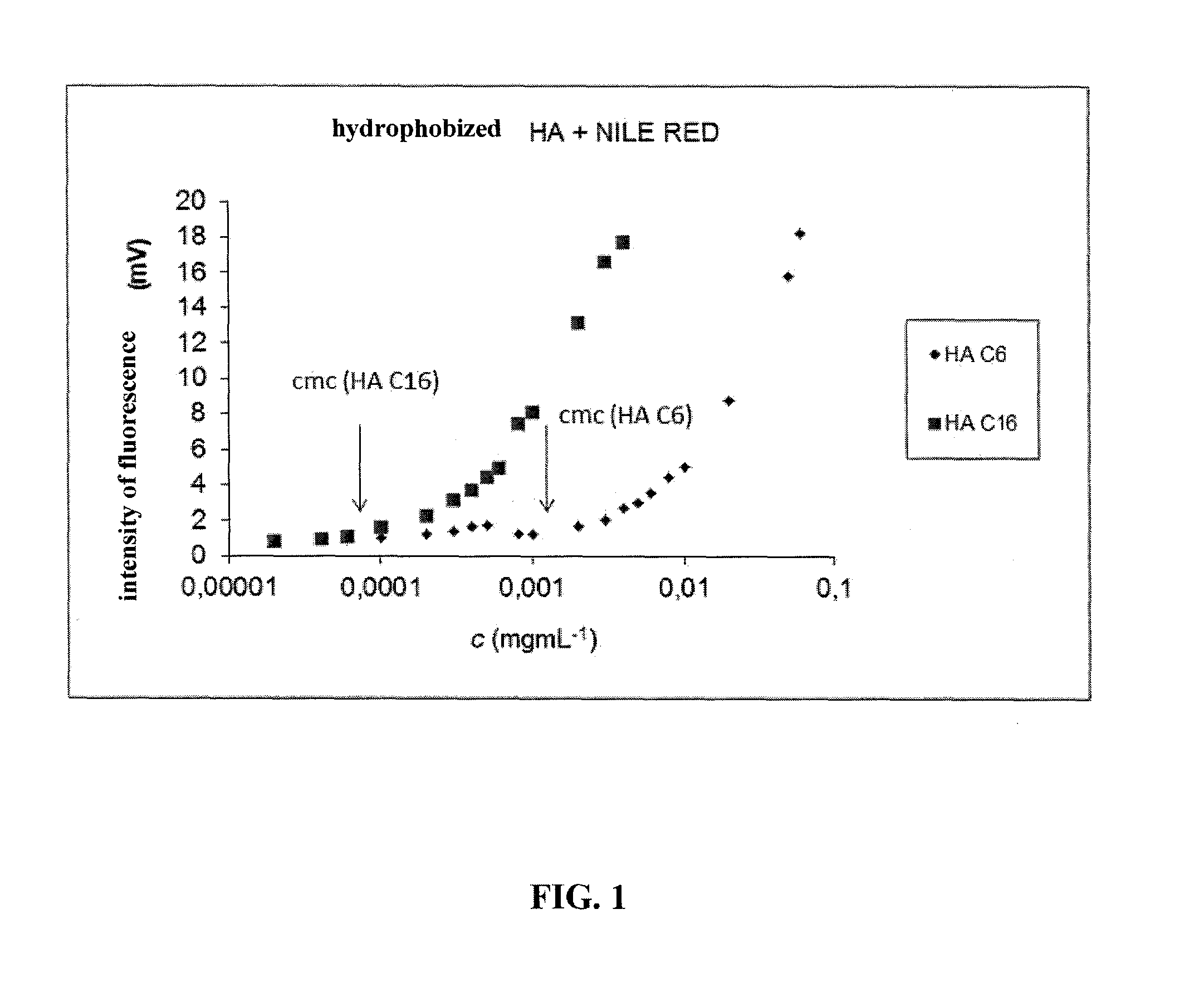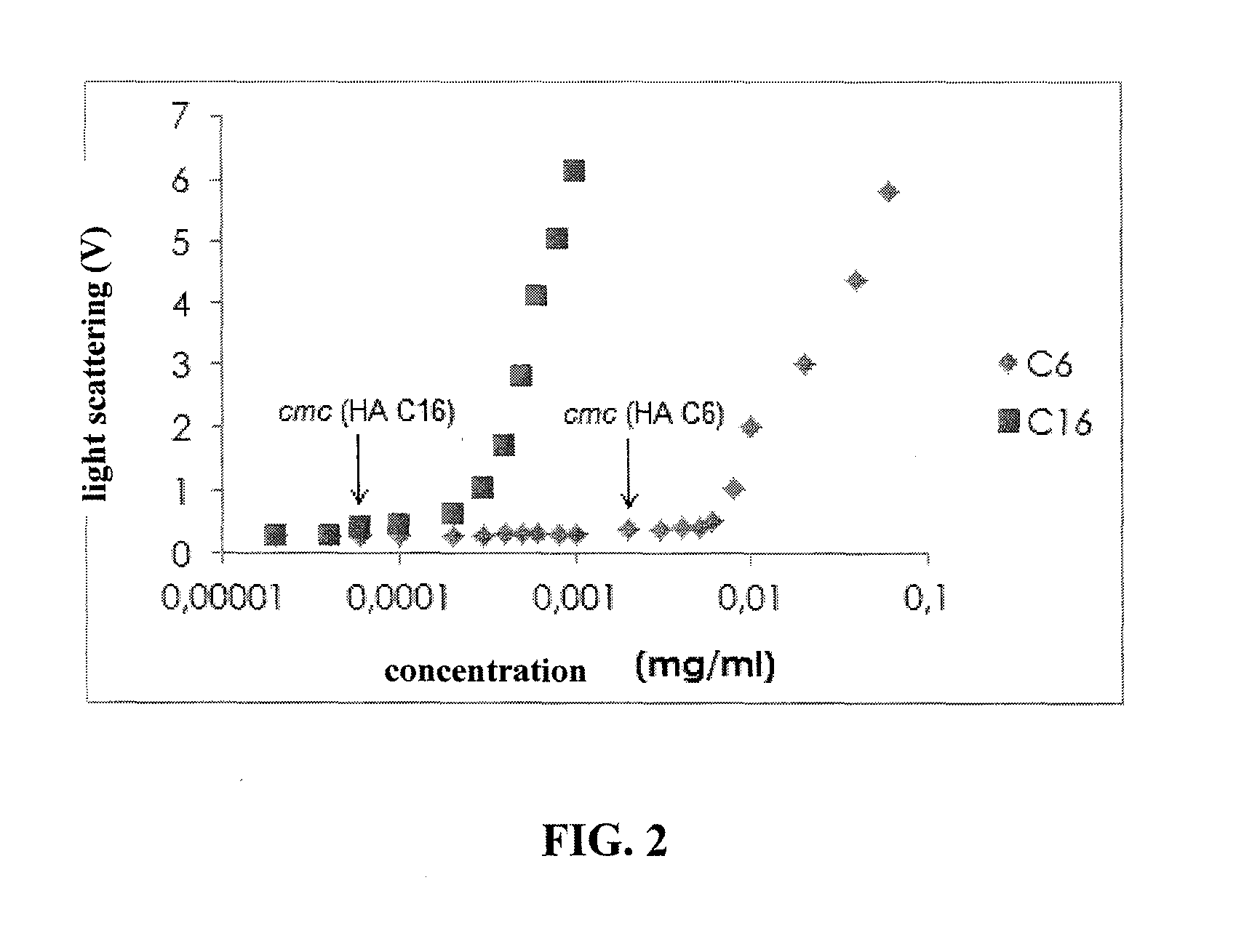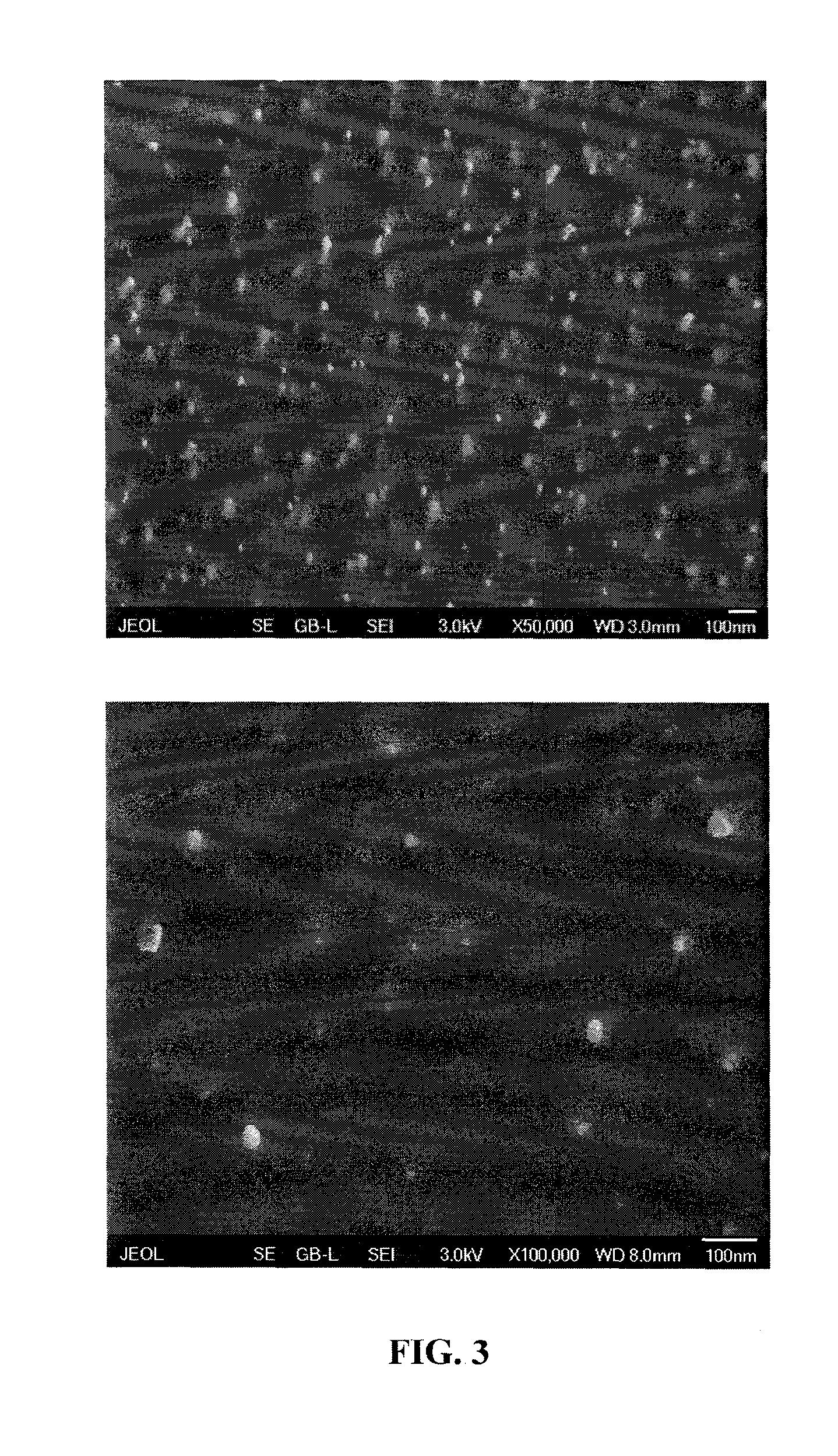C6-C18-Acylated Derivative of Hyaluronic Acid, Method of Preparation Thereof, Nanomicellar Composition on its Basis, Method of Preparation Thereof and Method of Preparation Stabilized Nanomicellar Composition, and Use Thereof
a technology of hyaluronic acid and acylated derivatives, applied in the field of hydrophobic hyaluronic acid preparation methods, to achieve the effect of reducing boiling point, facilitating permeability and retention effect, and reducing the number of acylated derivatives
- Summary
- Abstract
- Description
- Claims
- Application Information
AI Technical Summary
Benefits of technology
Problems solved by technology
Method used
Image
Examples
example 1
Preparation of Capronyl (C6) Derivative of Hyaluronic Acid by Means of the Mixed Anhydride of 2,4,6-Trichlorohenzoic Acid and Caproic Acid
[0067]1 g of sodium hyaluronate (2.5 mmol. 15 kDa) was dissolved in 10 mL of demineralized water. Afterwards, 5 mL of DMSO were gradually added. Then, TEA (1.05 mL, 3 eq.) and DMAP (8.0 mg, 0.05 eq.) were added to the solution. Simultaneously, hexanoic acid (0.63 mL, 2 eq.) was dissolved in 5 mL of DMSO and TEA (1.05 mL, 3 eq.) and then 2,4,6-trichlorobenzoyl chloride (1.6 mL. 4 eq.) were added to the solution. Following the activation of the acid, the precipitate was filtered into the prepared solution of HA. The reaction was taking place under room temperature for 3 hours. Afterwards, the reaction mixture was diluted with 5 mL of demineralized water containing the addition of 0.25 g of NaCl. The acylated derivative was isolated from the reaction mixture in the subsequent precipitation process using the 4-fold of absolute isopropanol. After havin...
example 2
Preparation of Capronyl (C6) Derivative of Hyaluronic Acid by Means of the Mixed Anhydride of 2,4,6-Trichlorobenzoic Acid and Caproic Acid
[0070]1 g of sodium hyaluronate (2.5 mmol, 38 kDa) was dissolved in 10 mL of demineralized water. Afterwards, 5 mL of isopropanol were gradually added. Then, TEA (1.05 mL, 3 eq.) and pyridine (0.4 mL, 2.0 eq.) were added to the solution. Simultaneously, hexanoic acid (0.32 mL. 1 eq.) was dissolved in 5 mL of isopropanol and then TEA (1.05 mL, 3 eq.) and 2,4,6-trichlorobenzoyl chloride (0.391 mL, 1 eq.) were added to the solution. Following the activation of the acid, the precipitate was filtered into the prepared solution of HA. The reaction was taking place under room temperature for 3 hours. Afterwards, the reaction mixture was diluted with 5 mL of demineralized water containing the addition of 0.50 g of NaCl. The acylated derivative was isolated from the reaction mixture in the subsequent precipitation process using the 4-fold of absolute isopr...
example 3
Preparation of Enanthyl (C7) Derivative of Hyaluronic Acid by Means of the Mixed Anhydride of 2,4,6-Trichlorobenzoic Acid and Enanthic Acid
[0073]1 g of sodium hyaluronate (2.5 mmol, 15 kDa) was dissolved in 10 mL of demineralized water. Afterwards, 5 mL of acetonitrile were gradually added. Then, TEA (0.70 mL, 2 eq.) and DMAP (15.0 mg, 0.05 eq.) were added to the solution. Simultaneously, enanthic acid (0.35 mL, 1 eq.) was dissolved in 5 mL of acetonitrile and then TEA (0.70 mL, 2 eq.) and 2,4,6-trichlorobenzoyl chloride (0.39 mL, 1 eq.) were added to the solution. Following the activation of the acid, the precipitate was filtered into the prepared solution of HA. The reaction was taking place under room temperature for 3 hours. Afterwards, the reaction mixture was diluted with 5 mL of demineralized water containing the addition of 0.75 g of NaCl. The acylated derivative was isolated from the reaction mixture in the subsequent precipitation process using the 4-fold of absolute isopr...
PUM
| Property | Measurement | Unit |
|---|---|---|
| temperature | aaaaa | aaaaa |
| temperature | aaaaa | aaaaa |
| temperature | aaaaa | aaaaa |
Abstract
Description
Claims
Application Information
 Login to View More
Login to View More - R&D
- Intellectual Property
- Life Sciences
- Materials
- Tech Scout
- Unparalleled Data Quality
- Higher Quality Content
- 60% Fewer Hallucinations
Browse by: Latest US Patents, China's latest patents, Technical Efficacy Thesaurus, Application Domain, Technology Topic, Popular Technical Reports.
© 2025 PatSnap. All rights reserved.Legal|Privacy policy|Modern Slavery Act Transparency Statement|Sitemap|About US| Contact US: help@patsnap.com



